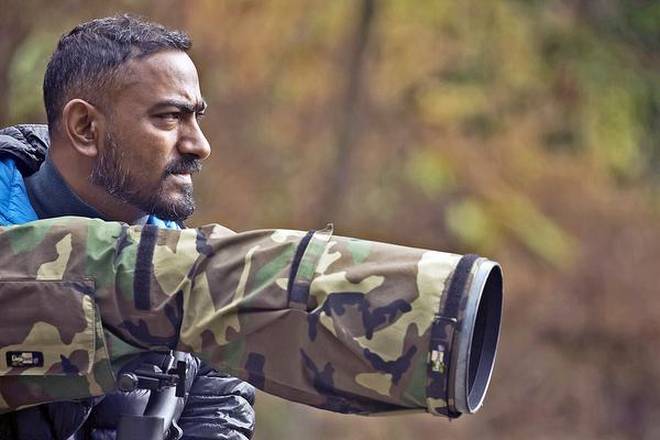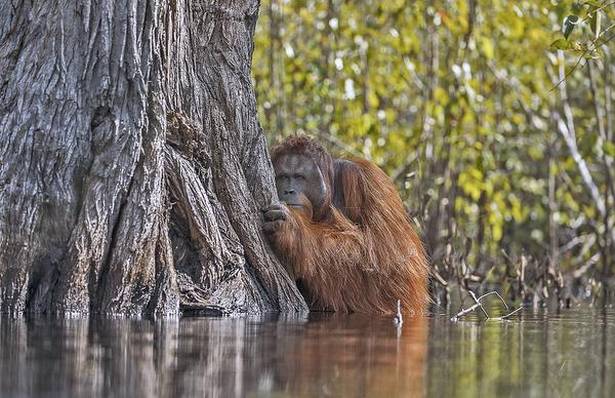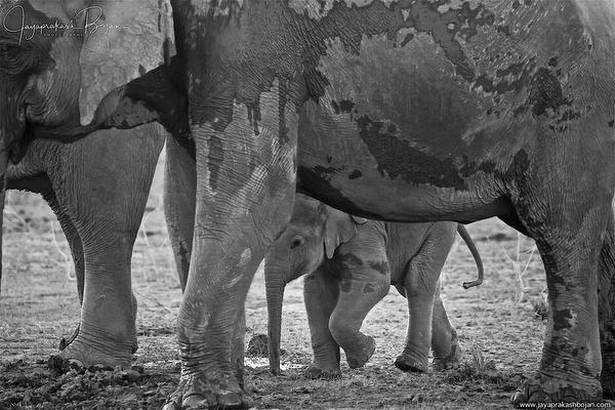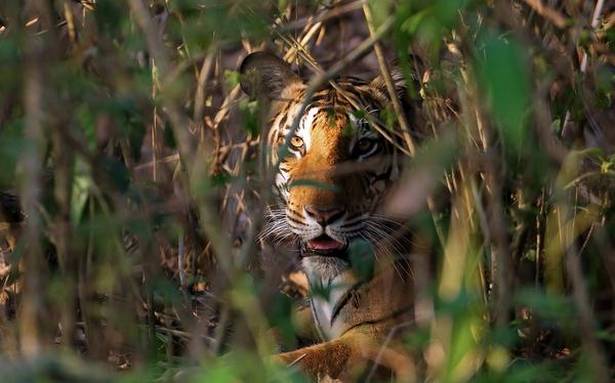Jayaprakash Joghee Bojan, who is National Geographic’s Nature Photographer of the Year 2017, talks about his award-winning shot and love for wildlife photography
He was a point-and-shoot photographer for 10 years. Four years ago, his wife got him a DSLR and today Jayaprakash Joghee Bojan is the National Geographic’s Nature Photographer of the Year 2017 for his photograph of an orangutan crossing a river in the wilds of Borneo.
Excitement ripples through his voice as he talks about his award-winning shot. “In August, I was in Kalimantan on the Indonesian side of Borneo and heard about this orangutan that crossed the river. I found this amazing because orangutans normally avoid water. They’re arboreal creatures. And, there were crocodiles in the river.”
So he made for the area but didn’t see anything for a couple of days. But he decided to wait. “I had a hunch this would be special.” On the third day, he heard that the animal had been spotted on the other side of the river and rushed to the spot. “When the orangutan appeared, I climbed into the water.” Didn’t he remember the crocs? “Yes but I had to do it if I wanted that truly unique shot.” His appearance made the orangutan nervous and it retreated behind a tree. They played peekaboo till the animal decided that it could ignore him. “I got around 25 shots of it peeping out from behind the tree and retreating,” laughs Bojan. “Then he came out and began to cross the river and I got this shot.”
Bojan, who is from the Nilgiris, says his interest in wildlife came naturally. His grandparents lived in a village just a few kilometres from Dodabetta. “I was surrounded by birds and lot of wildlife.” He also lived in Bengaluru so he got in a lot of “backyard birding” and travelled to all the National Parks in India (one of his favourites is Nagarhole). But he started taking wildlife photography seriously when his wife was transferred to Singapore two years ago and he quit his job to move there. A visit to the Singapore Zoo triggered his interest in primates. “It was the first time I had seen them and I wanted to see them in the wild.” He began to research and reach out to people across Southeast Asia. “Southeast Asia has approximately 25% of the most highly endangered species of primates. You don’t have the usual photo-safari destinations here and it was hard to find people who knew where to spot them. Slowly my connections grew and I’ve been able to photograph around eight or nine species.”
Bojan’s photos were earlier picked as the Editor’s favourites in the National Geographic Nature Photography Awards but he’s glad it’s the orangutan that won. “More people will see this and there will be more visibility and may be more people will be willing to help. The orangutans need more help than they’re getting.”
His favourite subjects apart from primates, and organutans in particular, are the tiger and otters. “My first tiger shot was in Bandipur,” he reminisces. “It was a female called Gauri and she had two cubs.” On the subject of otters, he has a lot more to say. While he has photographed otters in the wild in Kabini and Corbett National Park, it is a family of wild otters near his house in Singapore that currently has him captured. “They’ve figured out a way to live in an urban place like Singapore. There’s a community called Otter Watch that tracks the otters across Singapore. They post updates on social media and recently celebrated the birth of new pups. The otters roll on the sand or the grass to clean their fur as the humans watch and even take food from them.” One of Bojan’s photos of a couple of elderly men reaching out to the otters won an award from the Indian website Nature in Focus.
Going forward, Bojan hopes to do a photo-story book on primates. “Some of these species number just 50-100 in the wild.” He’s also looking forward to a trip in Japan in February to shoot the snow monkey, the red fox and migrating raptors. He hopes to get some sightings of the elusive snow leopard from a trip to the Spiti Valley later in 2018. Towards the end of the year, if his permissions come through, he’ll be tracking a rare monkey on the Vietnam-China border. “I have lots of photographs to come; many more stories to tell,” he says.
A tough battle
Halfway through the story of his award-winning shot, Bojan gets side-tracked into the story of a ranger-turned-conservationist who is trying to buy land around the periphery of the national parks to ensure that it doesn’t fall into the hands of palm oil companies. “He’s educating the local people about habitats and the animals there and training them to be guides. The profits from guided tours are being invested into ensuring that land around the forest stays wild.”
While Bojan admits it’s a tough call to choose between preserving habitats and finding employment, he hopes they can sustain this initiative. “Obviously they cannot pay as much as the bigger companies. I am donating a part of the award money towards this cause. They’ve managed to buy around 12 acres in the last year, which is a great feat.” Around 30% of Indonesia’s income comes from palm oil, so it’s a “tricky affair for all concerned: the government and the people on the ground.”
source: http://www.thehindu.com / The Hindu / Home> Life & Style / by R. Krithika / December 25th, 2017



